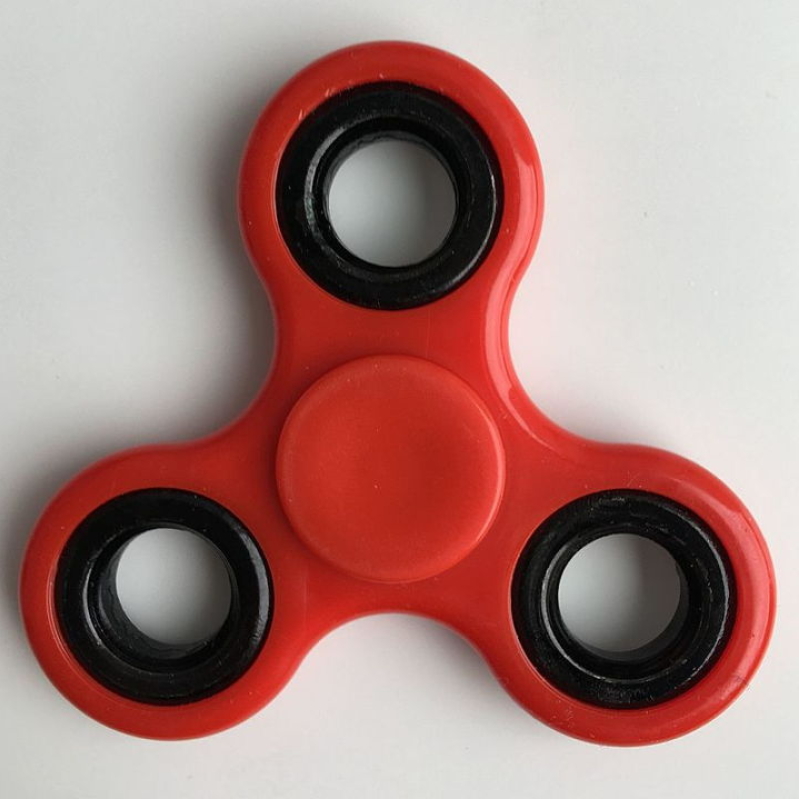
Stress in kids, who would have thought? Fidget spinners were invented especially for kids who have racked up a whole lot of stress. Hey, don’t laugh at the situation. Adults are not the only ones who are stressed out -- just ask any child in Hong Kong, Singapore, South Korea, Taiwan, or Japan, and you would hear answers about the pressures that they face from their own families to do well in school. Exceptionally well, top of the class, Asian parent-style. 99 out of 100 is not enough, and would often receive a disapproving look from both parents most of the time, or so we have been told. Excellence in education is everything, and with modernization taking place at express speed, this extends to other disciplines such as music lessons, dancing classes, learning a foreign language, and to even excel in sports, all at the same time. Such pressure were unheard of just one generation ago, hence the emergence of fidget spinners to help alleviate such levels of stress among kids.
What are fidget spinners exactly, and what do they do?
First invented in the 1990s, the fidget spinner of today has made a huge comeback thanks to James Plafke of Forbes having published an article that described how fidget spinners as the "must-have office toy for 2017" on December 23, 2016. Sometime in late March 2017, social media channels and YouTube began to showcase video reviews of fidget spinners as well as tricks in using them, which signalled these fidget toys as making a grand appearance in mainstream consciousness.
Fidget spinners tend to be small and colorful, and prices vary depending on the "features" and manufacturer. Amazon carries over 400 pages of fidget spinner listings. They need to be colorful and attractive if they are going to capture the attention of kids. Heck, there are even versions that come in the form of Captain America's shield (obviously a knock-off of a Marvel copyright), although generally speaking, these tiny devices equipped with a ball bearing mechanism looks like a variant of the blades found in any regular standing fan. It is definitely able to keep idle hands busy, and works for adults as well. It helps a person expend nervousness or energy, and manufacturers of fidget spinners claim that these small devices are great to help kids who have attention disorders stop fidgeting so much. Apart from that, there are also claims that it is possible to obtain relief in kids who are anxious or autistic, thanks to the fidget spinner's repetitive motion.
Do take note that there are no medical studies done or research performed that back up this toy's claims on supposed "benefits". Fidget spinners operate on the assumption that it will be able to provide relief to all of those "symptoms", but there is no real hard evidence to back it up. Sort of akin to alkaline water being the miracle drink that everyone should go for, although watching "A Cure for Wellness" might make you think otherwise.
Are fidget spinners safe?
One thing is for sure -- the fidget spinner has not received any form of approval from the FDA (Food and Drug Administration), and doctors would definitely not recommend it as a form of healing to their patients. The benefits have largely been anecdotal to date, and since it is small, there is a risk of a child choking on one of these if he or she is not careful. However, most kids who play with this phenomenal, revitalized toy would most probably know better than to do that.
Do I get a fidget spinner for my kid or not? They’re driving me nuts for one!
If your kid or entire brood do not seem to exhibit plenty of nervousness and energy, then there should not be any harm in getting them one. Chances are, they are clamoring for one simply because of peer pressure, that “everyone has one.” You would most probably find these toys behind the couch or lost under the TV cabinet somewhere in the weeks or months to come, as they move on to the next big fad for kids.
I want a fidget spinner for myself!
If you’re stressed out at the office, and think that the old school stress ball is not good enough, then by all means go ahead and substitute it with the fidget spinner. You would most probably lose interest in it after a while and move on to something else, but different people cope with nervousness and stress in their own way. The fidget spinner might seem to work as a placebo for some, while for others, they might prefer to fall back on shaking their legs, biting their nails, or fidgeting with their fingers.
Are there fidget spinner alternatives?
Sure there are. The ones that do not cost any money include shaking your legs, twirling your hair, or twiddling with your thumbs. Anyone can do that. Others might settle for the traditional stress ball, or check out the Fidget Cube that offers different kinds of sensory feedback, or even use the Worry Stone. Heck, doodling on a piece of paper will also work, and since most offices have done away with a wired phone, having a non-working corded office phone by your desk would be great since you can fiddle around with the phone cord while talking to someone else on your smartphone or cordless handset.







